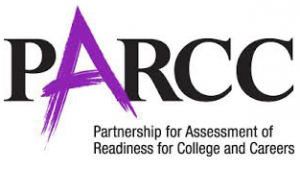Testing time is just around the corner, and schools from all over the country are trying to get their students ready for the upcoming Common Core testing. Common Core has been so confusing and a big adjustment for many parents, teachers, and administrators over the past few years. One of the questions that always comes up is what are the differences between PARCC and Smarter Balanced? Why are some states taking the PARCC version of Common Core Assessments, and some taking the Smarter Balanced version of the Common Core testing? Let’s try to clear this up a bit, and take a closer look at both, and what is different, and what is the same about the tests.
PARCC:

PARCC stands for (Partnership for Assessment of Readiness for College and Careers), and it is made up of 12 states and the District of Columbia. Its purpose is to develop a test that will give an accurate view of a student’s progress towards being successful in college and their chosen career. The test is given to students in grades 3-8 in Math and ELA. Though PARCC does offer testing for K-12 grades, 3-8 is the main focus. (www.parcconline.org)
SMARTER BALANCED:

Smarter Balanced is a second consortium of states that are taking a similar, but different approach from that of PARCC. It has the same goals as PARCC that is to evaluate, and assess the readiness a student is for college. Smarter Balanced is made up of 17 states and one U.S. Territory according to their website. Smarter Balanced tests grades 3-8 and 11 in Math and ELA.( www.smarterbalanced.org)
PARCC Testing:
Testing for the PARCC states began early in the year. Most states have already administered their Diagnostic test at the beginning of this school year. The second phase of testing will come mid-year with an optional assessment that will help schools to predict student’s success on the end of the year assessment. The third phase of testing will normally occur once about 75% of the school year is complete at that time the students will be required to take a PBA (Performance Based Assessment). The last assessment of the year will be the EOY (End of Year) assessment that is taken when about 90 percent of the school year is complete..
SMARTER BALANCED Testing:
The Smarter Balanced testing has three components compared to PARCC’s four. Smarter Balanced offers a Formative assessment that helps teachers to identify problem areas for students in regards to the end of the year testing. The second component is an assessment similar to that of PARCC’s mid-year assessment. In this interim assessment school’s can use the information to predict how the student will do the Summative assessment at the end of the year. The last component of Smarter Balanced is their computer-adaptive Summative assessment that will be given during the last 12 weeks of the school year.
Differences between the two tests:
Though there are many similarities in the two tests, there are many differences as well! The first would be in the formatting of the tests. PARCC uses a fixed delivery method for their tests, while Smarter Balanced uses a computer adaptive delivery method. Smarter Balanced use of a computer adaptive delivery method makes it so the test will adapt to how the well the students have done on previous questions. If a student is answering the questions correctly the questions will get progressively harder, while if the student answer’s wrong they will get easier. This is done so that schools can quickly identify an accurate view of the student’s current academic abilities.
One other major area that has the key difference in the PARCC, and Smarter Balanced testing cycles is the options that are offered for additional testing to prepare and predict the success on the EOY. In PARCC they offer beginning of the year optional Diagnostic test and an optional mid-year assessment. While Smarter Balanced offers optional interim assessments for grades 3-12.
Additional thoughts:
Regardless of the state you live, both PARCC, and Smarter Balanced gives parents, and teachers a way to look at their student’s academic standing compared to other’s in their state, and all over the country. Though the testing is not a perfect solution, it is a progression to the end that is improving student achievement across the country. As this testing continues and evolves, it will only be better for the students in the long run. I welcome any thoughts you might have on the differences between the two consortiums and Common Core testing in general.






Pingback: PARCC vs. Smarter Balanced similar but different! | Think Educative